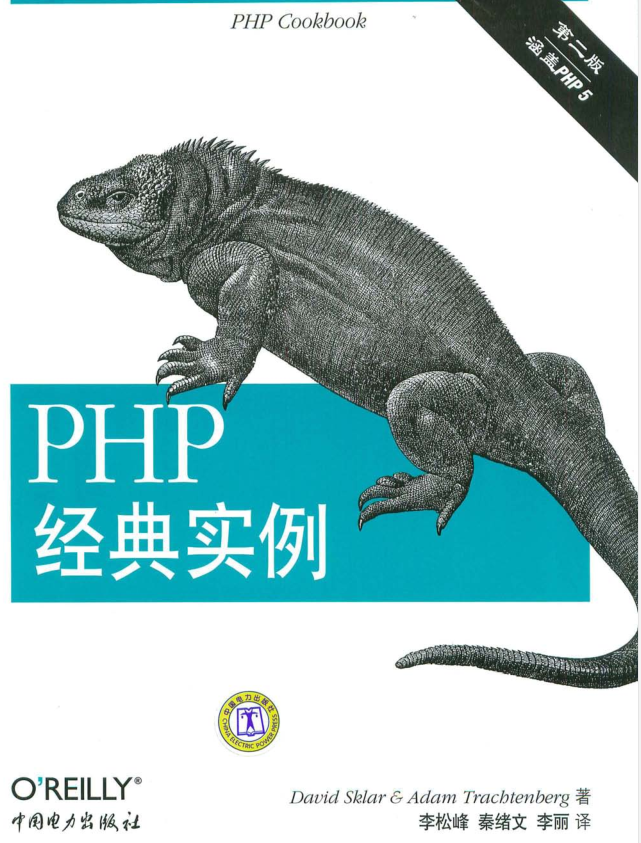
本教程详细介绍了如何将独立的Python命令行应用程序(如计时器)迁移并集成到Django Web框架中。文章将指导读者理解从命令行交互到Web界面交互的转变,重点讲解如何利用Django的视图、模板和表单功能来接收用户输入、处理后端逻辑,并最终在Web环境中展示结果。同时,也将探讨在Web应用中处理后台任务(如计时器倒计时和通知)的策略,强调异步任务队列的重要性。
将一个独立的Python命令行界面(CLI)应用程序(例如计时器脚本)转换为一个功能完善的Django Web应用,是许多初学者在学习Web开发时面临的常见挑战。CLI应用直接通过终端与用户交互,使用input()获取输入,print()输出信息,并可能利用os.system()执行系统命令。然而,Web应用程序则通过HTTP协议与用户浏览器进行通信,依赖HTML表单收集数据,通过HTTP响应渲染页面,并可能使用JavaScript在客户端实现交互和通知。
Django作为一个“自带电池”的Python Web框架,提供了强大的工具和清晰的架构(Model-View-Template,MVT)来帮助开发者高效地构建Web应用,从而弥合CLI与Web应用之间的鸿沟。
在将Python逻辑集成到Django时,理解MVT架构至关重要:
立即学习“Python免费学习笔记(深入)”;
首先,我们来分析原始的Python计时器脚本,识别其核心功能和需要改造的部分:
import time import os from threading import Thread # ... (userTimeSet, timeConfirmation, timeCheck, alarmNotification functions) ... userTimeSet() # 程序的入口
核心功能模块:
需要改造的部分:

PHP经典实例(第2版)能够为您节省宝贵的Web开发时间。有了这些针对真实问题的解决方案放在手边,大多数编程难题都会迎刃而解。《PHP经典实例(第2版)》将PHP的特性与经典实例丛书的独特形式组合到一起,足以帮您成功地构建跨浏览器的Web应用程序。在这个修订版中,您可以更加方便地找到各种编程问题的解决方案,《PHP经典实例(第2版)》中内容涵盖了:表单处理;Session管理;数据库交互;使用We
 453
453

以下是将计时器逻辑集成到Django的详细步骤。
假设您已通过django-admin startproject myproject和python manage.py startapp timer_app创建了Django项目和应用。
视图函数是处理HTTP请求并返回HTTP响应的地方。我们将在这里接收表单数据,并调用核心逻辑。
# timer_app/views.py
from django.shortcuts import render, redirect
from django.http import HttpResponse
from .forms import TimerForm
import time
from datetime import datetime, timedelta
# 模拟的后端计时逻辑(不阻塞Web服务器)
# 实际生产环境应使用数据库或缓存存储计时器状态,并配合异步任务队列
active_timers = {} # 简单示例,实际应用中应使用数据库
def timer_input_view(request):
"""
处理计时器设置的表单输入。
"""
if request.method == 'POST':
form = TimerForm(request.POST)
if form.is_valid():
hours = form.cleaned_data['hours']
minutes = form.cleaned_data['minutes']
# 计算计时器结束时间
current_time = datetime.now()
end_time = current_time + timedelta(hours=hours, minutes=minutes)
# 在这里,我们将不再阻塞Web服务器
# 而是将计时器信息存储起来,并可以触发一个异步任务
timer_id = str(time.time()) # 简单的唯一ID
active_timers[timer_id] = {
'start_time': current_time,
'end_time': end_time,
'hours': hours,
'minutes': minutes
}
# 成功设置后重定向到状态页面
return redirect('timer_status', timer_id=timer_id)
else:
form = TimerForm()
return render(request, 'timer_app/timer_form.html', {'form': form})
def timer_status_view(request, timer_id):
"""
显示特定计时器的状态。
"""
timer_info = active_timers.get(timer_id)
if not timer_info:
return HttpResponse("计时器不存在或已过期。", status=404)
current_time = datetime.now()
remaining_time = timer_info['end_time'] - current_time
context = {
'timer_id': timer_id,
'start_time': timer_info['start_time'],
'end_time': timer_info['end_time'],
'hours_set': timer_info['hours'],
'minutes_set': timer_info['minutes'],
'remaining_seconds': int(remaining_time.total_seconds()) if remaining_time.total_seconds() > 0 else 0,
}
return render(request, 'timer_app/timer_status.html', context)
# 原始Python脚本中的 timeConfirmation 函数可以被部分复用
def get_future_time_info(hours, minutes):
"""
计算并返回计时器结束时间和当前时间。
"""
time_in_seconds = (hours * 3600) + (minutes * 60)
future_timestamp = time.time() + time_in_seconds
current_datetime_str = datetime.now().strftime("%Y-%m-%d %H:%M:%S")
future_datetime_str = datetime.fromtimestamp(future_timestamp).strftime("%Y-%m-%d %H:%M:%S")
return {
'current_datetime': current_datetime_str,
'timer_ends_at': future_datetime_str,
'total_seconds': time_in_seconds
}Django表单是处理用户输入最安全、最便捷的方式。它们负责渲染HTML表单、验证用户提交的数据以及将数据转换为Python对象。
# timer_app/forms.py
from django import forms
class TimerForm(forms.Form):
hours = forms.IntegerField(
label="小时数",
min_value=0,
required=True,
widget=forms.NumberInput(attrs={'placeholder': '例如: 1'})
)
minutes = forms.IntegerField(
label="分钟数",
min_value=0,
max_value=59,
required=True,
widget=forms.NumberInput(attrs={'placeholder': '例如: 30'})
)
def clean(self):
cleaned_data = super().clean()
hours = cleaned_data.get('hours')
minutes = cleaned_data.get('minutes')
if hours == 0 and minutes == 0:
raise forms.ValidationError("小时和分钟不能同时为零。")
return cleaned_data模板负责呈现用户界面。
timer_app/templates/timer_app/timer_form.html:
<!DOCTYPE html>
<html lang="zh-cn">
<head>
<meta charset="UTF-8">
<meta name="viewport" content="width=device-width, initial-scale=1.0">
<title>设置计时器</title>
<style>
body { font-family: Arial, sans-serif; margin: 20px; }
form { background-color: #f4f4f4; padding: 20px; border-radius: 8px; max-width: 400px; margin: auto; }
label { display: block; margin-bottom: 5px; font-weight: bold; }
input[type="number"] { width: calc(100% - 22px); padding: 10px; margin-bottom: 10px; border: 1px solid #ddd; border-radius: 4px; }
button { background-color: #007bff; color: white; padding: 10px 15px; border: none; border-radius: 4px; cursor: pointer; font-size: 16px; }
button:hover { background-color: #0056b3; }
.errorlist { color: red; list-style-type: none; padding: 0; margin-top: -5px; margin-bottom: 10px; }
</style>
</head>
<body>
<h1>设置您的计时器</h1>
<form method="post">
{% csrf_token %}
{{ form.non_field_errors }}
<div>
<label for="{{ form.hours.id_for_label }}">{{ form.hours.label }}</label>
{{ form.hours }}
{% if form.hours.errors %}
<ul class="errorlist">
{% for error in form.hours.errors %}<li>{{ error }}</li>{% endfor %}
</ul>
{% endif %}
</div>
<div>
<label for="{{ form.minutes.id_for_label }}">{{ form.minutes.label }}</label>
{{ form.minutes }}
{% if form.minutes.errors %}
<ul class="errorlist">
{% for error in form.minutes.errors %}<li>{{ error }}</li>{% endfor %}
</ul>
{% endif %}
</div>
<button type="submit">启动计时器</button>
</form>
</body>
</html>timer_app/templates/timer_app/timer_status.html:
<!DOCTYPE html>
<html lang="zh-cn">
<head>
<meta charset="UTF-8">
<meta name="viewport" content="width=device-width, initial-scale=1.0">
<title>计时器状态</title>
<style>
body { font-family: Arial, sans-serif; margin: 20px; text-align: center; }
.container { background-color: #e9f7ef; padding: 30px; border-radius: 8px; max-width: 600px; margin: 50px auto; border: 1px solid #d4edda; }
h1 { color: #28a745; }
p { font-size: 1.1em; line-height: 1.6; }
strong { color: #007bff; }
#countdown { font-size: 2.5em; font-weight: bold; color: #dc3545; margin-top: 20px; }
.back-link { display: inline-block; margin-top: 30px; padding: 10px 20px; background-color: #6c757d; color: white; text-decoration: none; border-radius: 5px; }
.back-link:hover { background-color: #5a6268; }
</style>
</head>
<body>
<div class="container">
<h1>计时器已设置!</h1>
<p>您设置了 <strong>{{ hours_set }} 小时 {{ minutes_set }} 分钟</strong> 的计时器。</p>
<p>开始时间: <strong>{{ start_time|date:"Y-m-d H:i:s" }}</strong></p>
<p>预计结束时间: <strong>{{ end_time|date:"Y-m-d H:i:s" }}</strong></p>
<p>剩余时间:</p>
<div id="countdown"></div>
<a href="{% url 'timer_input' %}" class="back-link">设置新的计时器</a>
</div>
<script>
// 客户端JavaScript实现倒计时
var remainingSeconds = {{ remaining_seconds }};
var countdownElement = document.getElementById('countdown');
function updateCountdown() {
if (remainingSeconds <= 0) {
countdownElement.innerHTML = "时间到!";
// 可以在这里触发客户端通知
// if (Notification.permission === "granted") {
// new Notification("计时器", { body: "时间到!" });
// } else if以上就是将独立的Python逻辑集成到Django Web应用:构建一个交互式计时器的详细内容,更多请关注php中文网其它相关文章!

每个人都需要一台速度更快、更稳定的 PC。随着时间的推移,垃圾文件、旧注册表数据和不必要的后台进程会占用资源并降低性能。幸运的是,许多工具可以让 Windows 保持平稳运行。

Copyright 2014-2025 https://www.php.cn/ All Rights Reserved | php.cn | 湘ICP备2023035733号